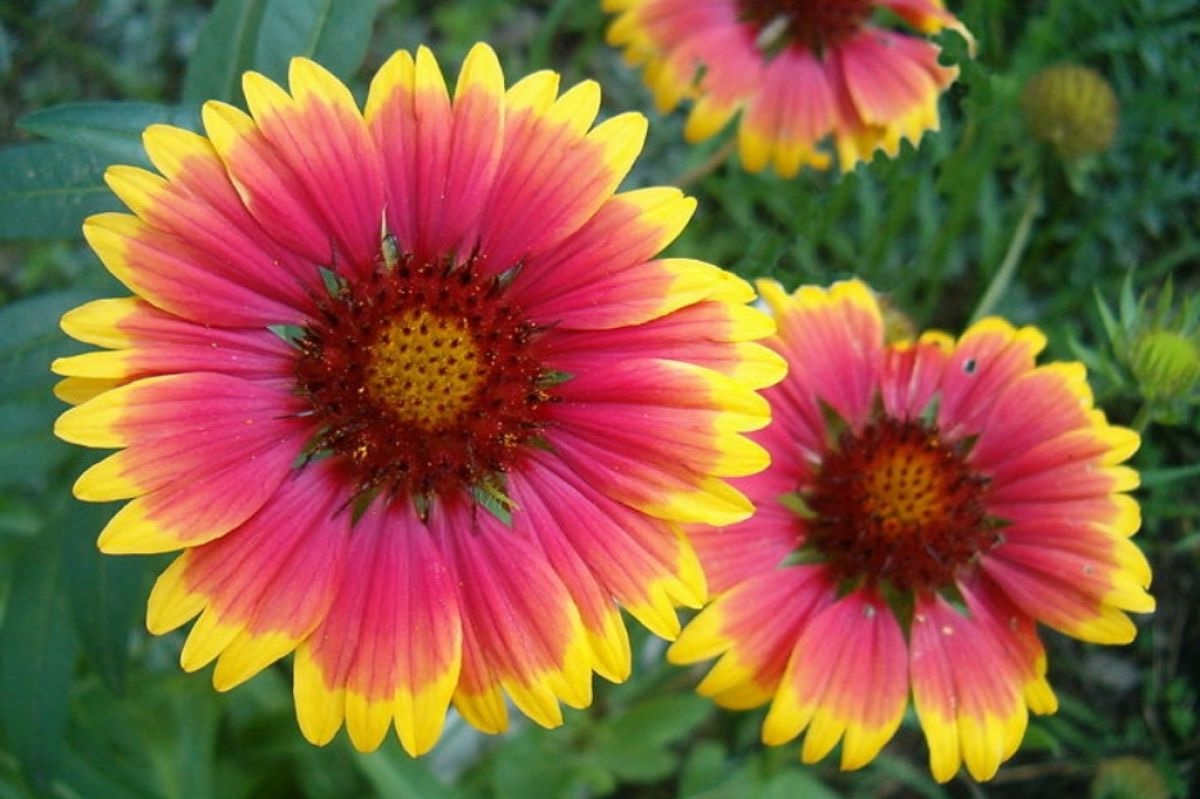
Blanket flowers, also known as Gaillardia, are vibrant, daisy-like blooms that bring a splash of color to gardens. These hardy perennials thrive in various climates and are beloved by gardeners for their long-lasting blooms and low maintenance. Did you know that blanket flowers can attract pollinators like bees and butterflies? Their bright red, orange, and yellow petals make them a standout in any landscape. Plus, they are drought-tolerant, making them perfect for xeriscaping. Whether you're a seasoned gardener or a newbie, blanket flowers are a fantastic addition to your garden. Ready to learn more? Here are 29 fascinating facts about these stunning flowers!
Blanket Flower Basics
Blanket flowers, also known as Gaillardia, are vibrant and hardy perennials that bring a splash of color to gardens. These flowers are not only beautiful but also have some fascinating characteristics.
-
Scientific Name: Gaillardia is the scientific name for blanket flowers, named after an 18th-century French magistrate and botanist, M. Gaillard de Charentonneau.
-
Native Habitat: These flowers are native to North and South America, thriving in prairies, meadows, and sandy soils.
-
Colorful Blooms: Blanket flowers are known for their bright, daisy-like blooms that come in shades of red, orange, yellow, and sometimes purple.
-
Long Blooming Season: They have a long blooming season, typically from early summer to the first frost, providing continuous color in gardens.
-
Drought Tolerant: These flowers are highly drought-tolerant, making them perfect for xeriscaping and low-water gardens.
Growing Conditions
Understanding the growing conditions for blanket flowers can help gardeners cultivate these beauties successfully.
-
Sunlight Requirements: Blanket flowers thrive in full sun, needing at least six hours of direct sunlight each day.
-
Soil Preferences: They prefer well-drained soil and can tolerate poor, sandy soils better than rich, heavy soils.
-
Watering Needs: While drought-tolerant, they still need regular watering during prolonged dry periods, especially when newly planted.
-
Fertilization: These flowers do not require heavy fertilization. Too much fertilizer can lead to fewer blooms and more foliage.
-
Spacing: When planting, space them about 12 to 18 inches apart to allow for good air circulation and growth.
Maintenance and Care
Blanket flowers are relatively low-maintenance, but a few care tips can ensure they thrive.
-
Deadheading: Regular deadheading, or removing spent blooms, encourages more flowers and extends the blooming season.
-
Pruning: Cutting back the plants in late summer can promote a second flush of blooms in the fall.
-
Pest Resistance: These flowers are generally pest-resistant, though they can occasionally attract aphids or leafhoppers.
-
Disease Resistance: They are also resistant to many common plant diseases, making them a hardy choice for gardens.
-
Winter Care: In colder climates, mulching around the base of the plants can help protect them during winter.
Varieties of Blanket Flowers
There are several varieties of blanket flowers, each with unique characteristics.
-
Gaillardia 'Goblin': This variety is compact, growing only about 12 inches tall, with bright red and yellow blooms.
-
Gaillardia 'Arizona Sun': Known for its large, fiery red and yellow flowers, this variety is a popular choice for its vibrant color.
-
Gaillardia 'Mesa Yellow': This variety features solid yellow blooms and is known for its uniform growth and long blooming period.
-
Gaillardia 'Fanfare': With unique, trumpet-shaped petals, this variety adds an interesting texture to gardens.
-
Gaillardia 'Burgundy': As the name suggests, this variety boasts deep burgundy flowers, adding a rich color to the garden palette.
Ecological Benefits
Blanket flowers are not just pretty; they also offer several ecological benefits.
-
Pollinator Friendly: These flowers attract bees, butterflies, and other pollinators, supporting local ecosystems.
-
Wildlife Habitat: They provide habitat and food for various insects and small animals.
-
Erosion Control: Their deep root systems help prevent soil erosion, especially in sandy or loose soils.
-
Low Maintenance: Their low maintenance needs make them an excellent choice for sustainable gardening practices.
Fun Facts
A few fun facts about blanket flowers can make them even more interesting to grow and appreciate.
-
Name Origin: The name "blanket flower" comes from the resemblance of their colorful blooms to Native American blankets.
-
Medicinal Uses: Some Native American tribes used parts of the plant for medicinal purposes, such as treating skin ailments.
-
Symbolism: In the language of flowers, blanket flowers symbolize happiness and joy, making them a cheerful addition to any garden.
-
Cut Flowers: They make excellent cut flowers, adding vibrant color to floral arrangements.
-
Easy Propagation: Blanket flowers can be easily propagated by seed or division, making it simple to expand your garden.
The Final Bloom
Blanket flowers, with their vibrant colors and easy care, make a fantastic addition to any garden. They attract pollinators like bees and butterflies, adding life and movement to your outdoor space. These hardy plants can thrive in various climates, making them a versatile choice for gardeners everywhere. Their long blooming season ensures your garden stays colorful for months.
Whether you're a seasoned gardener or just starting, blanket flowers offer beauty without the fuss. They resist pests and diseases, requiring minimal maintenance. Plus, their drought tolerance means less watering, saving you time and effort.
Incorporating blanket flowers into your garden not only enhances its aesthetic appeal but also supports local ecosystems. So, next time you're planning your garden, consider these cheerful blooms. You'll enjoy their beauty and the benefits they bring to your outdoor space. Happy gardening!
Was this page helpful?
Our commitment to delivering trustworthy and engaging content is at the heart of what we do. Each fact on our site is contributed by real users like you, bringing a wealth of diverse insights and information. To ensure the highest standards of accuracy and reliability, our dedicated editors meticulously review each submission. This process guarantees that the facts we share are not only fascinating but also credible. Trust in our commitment to quality and authenticity as you explore and learn with us.
